National Parks
| Name | Photo | Area | Established | Location |
|---|---|---|---|---|
| Central Balkan National Park |  | 716.69 km2 | 1991 | |
| Pirin National Park |  | 403.56 km2 | 1962 | |
| Rila National Park |  | 810.46 km2 | 1992 |
This is a list of protected areas in Bulgaria which includes 3 national parks, 11 nature parks and 55 nature reserves. [1] The national policy for governing and management of the protected areas is implemented by the Ministry of Environment and Water. The first nature park in Bulgaria and the Balkan Peninsula is Vitosha Nature Park, established in 1934. All of the nationally protected areas in Bulgaria are also part of the Natura 2000 network of protected natural areas in the territory of the European Union. Bulgaria has some of the largest Natura 2000 areas in the European Union covering 33.8% of its territory. [2]
| Name | Photo | Area | Established | Location |
|---|---|---|---|---|
| Central Balkan National Park |  | 716.69 km2 | 1991 | |
| Pirin National Park |  | 403.56 km2 | 1962 | |
| Rila National Park |  | 810.46 km2 | 1992 |
| Name | Photo | Area | Established | Location |
|---|---|---|---|---|
| Belasitsa Nature Park |  | 117.32 km2 | 2007 | |
| Bulgarka Nature Park |  | 217.72 km2 | 2002 | |
| Golden Sands Nature Park |  | 13.20 km2 | 1947 | |
| Persina Nature Park |  | 217.62 km2 | 2000 | |
| Rila Monastery Nature Park | 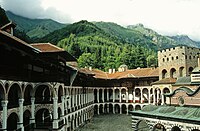 | 252.53 km2 | 2000 | |
| Rusenski Lom Nature Park |  | 32.60 km2 | 1970 | |
| Sinite Kamani Nature Park | 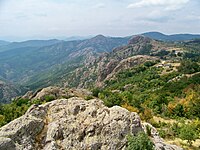 | 113.80 km2 | 1980 | |
| Shumen Plateau Nature Park |  | 39.3 km2 | 1980 | |
| Strandzha Nature Park | 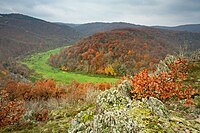 | 1,161.00 km2 | 1995 | |
| Vitosha Nature Park |  | 270.79 km2 | 1934 | |
| Vrachanski Balkan Nature Park |  | 288.44 km2 | 1989 |

Protected areas of Australia include Commonwealth and off-shore protected areas managed by the Australian government, as well as protected areas within each of the six states of Australia and two self-governing territories, the Australian Capital Territory and the Northern Territory, which are managed by the eight state and territory governments.

Protected areas or conservation areas are locations which receive protection because of their recognized natural or cultural values. Protected areas are those areas in which human presence or the exploitation of natural resources is limited.

A nature reserve is a protected area of importance for flora, fauna, funga, or features of geological or other special interest, which is reserved and managed for purposes of conservation and to provide special opportunities for study or research. They may be designated by government institutions in some countries, or by private landowners, such as charities and research institutions. Nature reserves fall into different IUCN categories depending on the level of protection afforded by local laws. Normally it is more strictly protected than a nature park. Various jurisdictions may use other terminology, such as ecological protection area or private protected area in legislation and in official titles of the reserves.
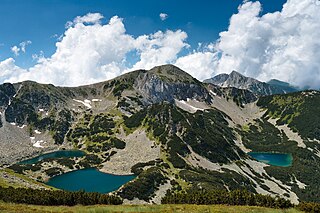
Pirin National Park, originally named Vihren National Park, covering the larger part of the Pirin Mountains in southwestern Bulgaria, spanning an area of 403.56 square kilometers (155.82 sq mi).
The Central Balkan National Park is a national park in the heart of Bulgaria, nestled in the central and higher portions of the Balkan Mountains. Its altitude varies from 550 metres (1,800 ft) near the town of Karlovo to 2,376 metres (7,795 ft) at Botev Peak, the highest summit in the range. It was established on 31 October 1991.
Rila National Park is the largest national park in Bulgaria spanning an area of 810.46 km2 in the Rila mountain range in the south-west of the country.

Protected areas of Poland include the following categories, as defined by the Act on Protection of Nature of 16 April 2004, by the Polish Parliament:

Ancient and Primeval Beech Forests of the Carpathians and Other Regions of Europe is a transnational serial nature UNESCO World Heritage Site, encompassing 93 component parts in 18 European countries. Together, the sites protect the largest and least disturbed forests dominated by the beech tree. In many of these stands, especially those in the Carpathians, beech forests have persisted without interruption or interference since the last ice age. These sites document the undisturbed postglacial repopulation of the species.

Lapland Nature Reserve is a Russian zapovednik in Murmansk Oblast, Russia, above the Arctic Circle. Officially established in 1957, the reserve protects an area of 2,784 km2 (1,075 sq mi) to the northwest of Lake Imandra, including 86 km² of inland water. The terrain is mountainous tundra and northern taiga. Since 1985 the zapovednik has been designated by UNESCO as a biosphere reserve. The name refers to the cultural area of Lapland, now preferably called Sápmi.
Protected areas of Sri Lanka are administrated by Department of Forest Conservation and Department of Wildlife Conservation of Sri Lanka.There are 501 protected areas in Sri Lanka. The protected areas that fall under supervision of the Department of Forest Conservation include forests defined in National Heritage Wilderness Area Act in 1988, forest reservations, and forests managed for sustainability. Sinharaja Forest Reserve is an example for a National Heritage forest. There are 32 forests categorized as conservation forests including Knuckles Mountain Range. Strict nature reserves, national parks, nature reserves, forest corridors, and sanctuaries recognized under the Flora and Fauna Protection Ordinance are managed by Department of Wildlife Conservation. Total of all protected areas is 1,767,000 ha. Protected areas in Sri Lanka account for 26.5 percent of the total area. This is a higher percentage of protected areas than in all of Asia and much of the World.

Despite being a relatively small country, Albania is exceedingly rich in biodiversity. Its ecosystems and habitats support over 5,550 species of vascular and non-vascular plants and more than 15,600 species of coniferous and non-coniferous evergreens, most of which are threatened at global and European levels. The country has made recent efforts to expand its network of protected areas which now include: 11 national parks, 1 marine park, 718 nature monuments, 23 managed nature reserves, 11 protected landscapes, 4 World Heritage Sites, 4 Ramsar sites and other protected areas of various categories, that when combined, account for 21.36% of the territory. Furthermore, a biosphere reserve, 45 important plant areas and 16 important bird areas are found in the country.
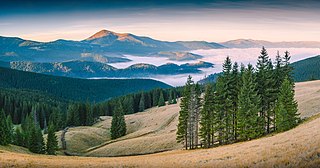
Carpathian Biosphere Reserve is a biosphere reserve in Ukraine that was established in 1968 and became part of the World Network of Biosphere Reserves of UNESCO in 1992. Since 2007 bigger portion of the reserve along with some territories of the Uzh River National Park was listed with the UNESCO World Heritage Sites as part of the Ancient and Primeval Beech Forests of the Carpathians and Other Regions of Europe.

Strandzha Nature Park is the largest protected area in Bulgaria spanning a territory of 1,161 square kilometres (448 sq mi) in the Strandzha Mountain in the extreme south-eastern corner of the country on the border with Turkey. It was established on 25 January 1995 to protect ecosystems and biodiversity of European importance, as well as the traditional cultural, historical and folklore heritage of the region. The altitude varies from 710 metres (780 yd) on Gradishte Peak to 0 metres (0 yd) at the Black Sea coast with average length of 50 kilometres (31 mi) from west to east and 20 kilometres (12 mi) from north to south.
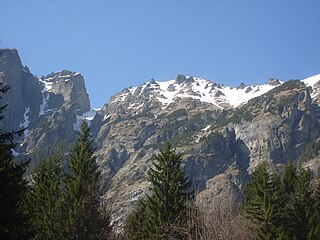
Rila Monastery Nature Park is one of the largest nature parks in Bulgaria, spanning a territory of 252.535 km2 (97.504 sq mi) in the western part of the Rila mountain range at an altitude between 750 and 2,713 metres. It is in Rila Municipality, Kyustendil Province and includes forests, mountain meadows, alpine areas, and 28 glacial lakes. With a little more than 1 million visitors, it is the second-most visited nature park in the country, after Vitosha Nature Park.

Uzunbodzhak, also transliterated as Ouzounboudjak is an UNESCO Biosphere Reserve, one of the five nature reserves in Strandzha Nature Park in south-eastern Bulgaria. The reserve is sometimes called Lopushna. Uzunbodzhak was established on 13 December 1956 and was included in the UNESCO network of biosphere reserves in March 1977. It covers an area of 2529.6 hectares, or 25.296 km2. All economic activities are prohibited on the territory of the reserve.

Bayuvi Dupki–Dzhindzhiritsa, also spelled Doupki–Djindjiritza, is a nature reserve in Pirin National Park, located in the homonymous mountain range in south-western Bulgaria. It is situated in Razlog Municipality, Blagoevgrad Province. Bayuvi Dupki–Dzhindzhiritsa is among the nation's oldest reserves, declared in 1934 to protect the forests of Macedonian pine and Bosnian pine, both Balkan endemic species. Its territory was further expanded in 1976 and 1980 and spans an area of 2873 ha or 28,73 km2. It was declared a UNESCO Biosphere Reserve in 1977. The reserve encompasses territory between 1200 and 2907 m altitude. Geologically it is dominated by Proterozoic marbles and has extensive karst terrain with numerous caves and karst formations.

Many parts of Scotland are protected in accordance with a number of national and international designations because of their environmental, historical or cultural value. Protected areas can be divided according to the type of resource which each seeks to protect. NatureScot has various roles in the delivery of many environmental designations in Scotland, i.e. those aimed at protecting flora and fauna, scenic qualities and geological features. Historic Environment Scotland is responsible for designations that protect sites of historic and cultural importance. Some international designations, such as World Heritage Sites, can cover both categories of site.

Parangalitsa, also spelled Parangalitza, is a nature reserve in Rila National Park, located in the Rila mountain range in southwestern Bulgaria. Parangalitsa is the nation's second oldest protected area, declared in July 1933 to protect undisturbed primary forests, particularly of Norway spruce and several pine species. Its original area was 1509 ha or 15,09 km2 and following several adjustments in 1961 and 2020, it currently spans a territory of 1487 ha or 14,87 km2. It was declared a UNESCO Biosphere Reserve in 1977. Parangalitsa is a strict nature reserve and in it are allowed only scientific research, education and passing through the reserve only on marked trails.

Central Rila Reserve is a nature reserve in Rila National Park, located in the Rila mountain range in southwestern Bulgaria. Spanning a territory of 12417 ha or 124.17 km2, it is the largest nature reserve in the nation and the Balkan Peninsula. It was declared in February 1992 to protect undisturbed primary alpine ecosystems. Upon its creation, the Central Rila Reserve included the whole territory of the previously existing since 1956 Marichini Lakes Reserve, and the latter seized to exist as a separate protected area, which had been part of the UNESCO Biosphere Reserve since 1977. It is a strict nature reserve.